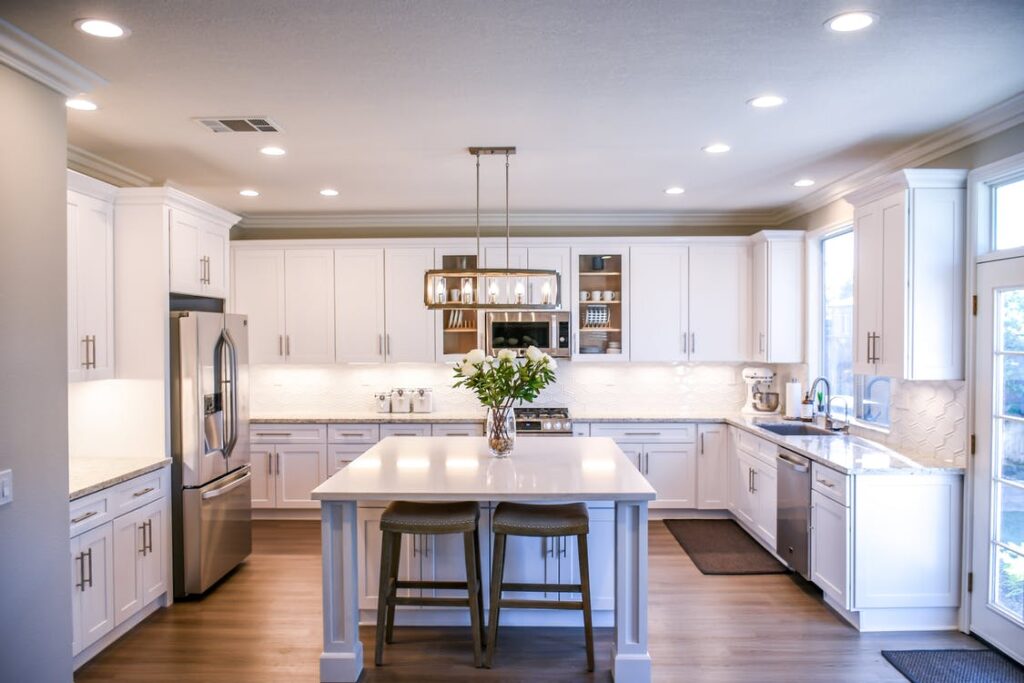Staging for sale is everything in involved in helping a potential buyer see themselves living in your home. This can be as simple as re-arranging furniture or it can be as extensive as remodeling.

Set a Budget
The first thing to consider is how much money you are willing to invest in upgrading your home to sell. Most people don’t sell a home very often and this can be a great opportunity to create a massive return on your investment. For example, paint in a can is worth $20. But paint on the wall can be worth $200. That’s ten times return on your money (1000% ROI). You simply cannot obtain this kind of short-term return on your investment with other investment vehicles with a low level of risk. And this can be done with a fairly high degree of certainty if you do your homework.
For instance, if you paint the entire inside of your home purple, you’re not likely to find a buyer who likes the way it is. Prince has passed away (God rest his soul) so most any new buyer will be thinking they will need to re-paint it. But they would be willing to do that if they can get the home for the right price. Why eliminate so many buyers who don’t want to do anything before they move in? This is Silicon Valley and time is money. Make it easy for them to all fall in love with YOUR home.
Here are some basic ideas to help a buyer be able to see themselves living in your home.
Clean it!
This should go without saying but you would be surprised what I see on a daily basis. This includes the windows you’re too busy or too tired to clean. If you need to, hire it out to a good cleaning crew. Remove the clutter. A basic idea here is to remove items of a personal nature like family pictures and certificates hanging on the wall. Let the buyer imaging what their items will look like in your property. Also, less is often more. This means that scarcity of furniture allows the space to breath. Often times we use glass tables when staging. Because of their transparency it can make a room appear larger. Paint color choices are a huge factor to consider. It’s best to use a homogeneous color scheme that ties in with flooring, cabinetry and countertops.
What Should You Update or Upgrade?
Flooring is a good area to consider upgrading. If you’ve got a 70’s shag carpet (which I happen to love) you’ll learn most buyers will be thinking, “how fast can I tear this all out?”. Make it easy for them and do it ahead of time! You can choose hardwood, laminate, tile, or even more contemporary carpet style. Again, a little homework goes a long way.
What about those rusty bathroom faucets? It’s relatively inexpensive to replace them with something that is consistent with today’s standards. Replacing sinks and old cracked “cultured marble” sinks can be done cost effectively and liven up a bathroom. I love the term “cultured marble”. I guess “cheap man made marble substitute” was already taken. No criticism here, I grew up with that in our bathroom and thought it was marvelous at the time.
How about kitchen countertops? Broken tiles? There are some amazing products that you can replace then with that very cost effective and buyers absolutely love them.
Selection and Placement of Furniture
Then there’s also what most people think of when the term “staging” is used and that’s furniture and accessory selection and placement. This can vary depending on the specific location and attributes of your home. For example, if you have a four-bedroom home, you might consider positioning one of the rooms as an office. But if you have a two-bedroom condo, it would be better to make it appear as two furnished bedrooms with beds. And not just any beds. Use beds that are appropriate for the size of the room. I’ve used everything from a King-sized bed in a master suite to two twin beds in a kids bedroom, a full bed in a guest room, and even one twin bed in a smaller room. But think of the rooms as a whole overall strategy before you start removing and replacing things. The aforementioned accessories are also very important. In baths, it could be soaps and fresh clean towels, and appropriate wall art work. In an office, use books, a desk, and an office chair. In the kitchen you can use cookbooks, olive oil bottles, maybe clear jar of pasta — but again, keep it simple and uncluttered!
How do you know how far to go? Be honest with yourself as to how much hassle you’re willing to live with. It may be that you don’t want to do anything and that’s OK! At least you are doing so intentionally. I’ve had many clients pass on making improvements because they didn’t want to deal with it and were willing to leave a little money on the table for the next owner.
Beyond that, here’s my rule of thumb for making any changes to your home before the sale. If you can’t at least double your money, don’t bother.
